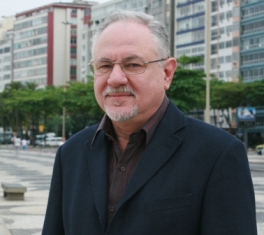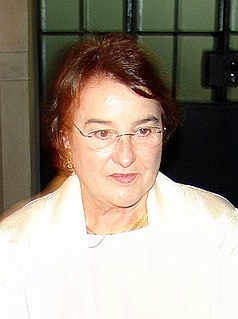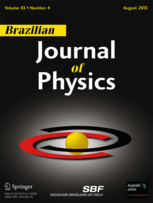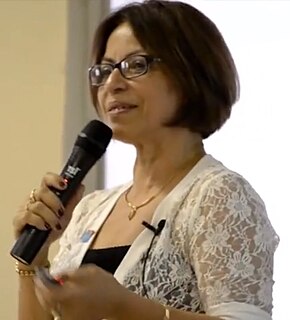The Prêmio José Reis de Divulgação Científica is an annual honor awarded by the Brazilian Council of Scientific and Technological Development (CNPq) to the institution, media organization, publication, or individual who most contributed to the dissemination and public awareness of science and technology in Brazil. It is thus named in honor of Dr. José Reis, a Brazilian biologist and science writer who was one of the pioneers in the field.

Bernardo Sorj is a Brazilian social scientist, retired professor of Sociology at the Federal University of Rio de Janeiro. He is Director of The Edelstein Center for Social Research and of the Plataforma Democrática Project. He has published 30 books and more than 100 articles, on Latin American political development, international relations, the social impact of new technologies, social theory and Judaism.
Simon Schwartzman is a Brazilian social scientist. He has published extensively, with many books, book chapters and academic articles in the areas of comparative politics, sociology of science, social policy, and education. In 1996, Schwartzman was awarded the Grand Cross of the Brazilian Order of Scientific Merit for his contributions to the cause and development of science in Brazil. In recent years, Schwartzman has written extensively on issues related to brain drain and brain circulation in the academic world, the Affirmative Action program in Brazilian higher education, and equity in education. He has been part of international teams of experts convened by OECD and The World Bank to advise governments on higher education, science and technology policies.

Ruth Vilaça Correia Leite Cardoso was a Brazilian anthropologist and a former member of the Faculty of Philosophy, Letters and Human Sciences at the University of São Paulo (FFLCH-USP). She was the wife of 34th President of Brazil, Fernando Henrique Cardoso, and First Lady of her country between January 1, 1995 to December 31, 2002. She too was a Ph.D in anthropology from the University of São Paulo.
The Journal of the Brazilian Chemical Society is a Brazilian scientific journal in chemistry. It was founded in 1990 and is published by the Brazilian Society of Chemistry, located at the Instituto de Química da Universidade de São Paulo. The journal is online, and the full text is freely available. According to the Journal Citation Reports, the journal has a 2014 impact factor of 1.129, ranking it 100th out of 157 journals in the category "Chemistry Multidisciplinary".
The Anais da Associação Brasileira de Química is a Brazilian scientific journal in chemistry. It was first published in 1942 under the title:
The Revista Brasileira de Química was a scientific journal of chemistry published from 1936–1978. The journal is also called Revista Brasileira de Química: Ciencia e Indústria. The publisher was the Revista Brasileira de Química itself in São Paulo, publication ceased in 1978.
The Revista Brasileira de Chímica was a peer-reviewed scientific journal of chemistry that was established in 1929 by the Sociedade Brasileira de Chímica. In 1932 the name changed to Revista da Sociedade Brasileira de Química. Publication was suspended between December 1933 to January 1936 and ceased in 1951 because the Sociedade Brasileira de Química was incorporated in the Associação Brasileira de Química. With the founding of the second Sociedade Brasileira de Química, the publication of Química Nova in 1978 and the Journal of the Brazilian Chemical Society in 1990 started. Química Nova is also subtitled as Revista da Sociedade Brasileira de Química, indicating its historical origin.
The Brazilian Journal of Chemical Engineering publishes papers, reporting basic and applied research and innovation in the field of chemical engineering and related areas. It was first published by the Associação Brasileira de Engenharia Química, São Paulo, in 1983 as the Revista Brasileira de Engenharia, Caderno de Engenharia Química. With vol. 11 (1994), it continued as the Brazilian Journal of Chemical Engineering.

The Instituto Histórico e Geográfico (IHGB), founded October 21, 1838, is the oldest and traditional authority to promote research and preservation of historical and geographical, cultural and social sciences in Brazil.
The Brazilian Physical Society is a civil association formed by physicists in Brazil. Founded on July 14, 1966, the SBF is headquartered in the city of São Paulo. Its first president was Oscar Sala.

Herch Moysés Nussenzveig is a Brazilian physicist, professor at Universidade Federal do Rio de Janeiro and member of the Brazilian Academy of Sciences. He authored several textbooks, notably the collection Curso de Física Básica, winner of the Prêmio Jabuti in 1999 on the category Ciências Exatas, Tecnologia e Informática. He was president of the Brazilian Society of Physics from 1981 to 1983.
Miguel Martins Abrahão is a prolific Brazilian writer and dramatist, author of numerous plays and books.
Carlos Antônio Napion, originally from Piedmont, was an engineer who became a general in the Portuguese army in Brazil. He set in motion the industry needed to create war materials in Brazil.
Otto Richard Gottlieb was a Czechoslovak-born naturalized Brazilian chemist and scientist of Jewish origin.[3]
The Brazilian Chemical Society is a not for profit organization that supports Chemistry in Brazil. It was founded in 1977.

The Brazilian Journal of Physics is a bimonthly peer-reviewed scientific journal covering all areas of physics. It is the official journal of the Brazilian Physical Society and is published on their behalf by Springer Science+Business Media. The journal was established in 1971 as the Revista Brasileira de Física, obtaining its current title in 1992. The editor-in-chief is Antonio Martins Figueiredo Neto.
Brazilian Journal of Geology is a quarterly peer-reviewed scientific journal published by the Sociedade Brasileira de Geologia, Brazil's main geology society. The journal covers the field of geology and related earth sciences, primarily on issues that are relevant to Brazil and nearby countries. The journal was established in 1971 and articles are published in English and Portuguese. The journal replaced the Boletim da Sociedade Brasileira de Geologia established in 1952. The journal is sponsored by Petrobras.

Vanderlan da Silva Bolzani is a Brazilian chemist at the São Paulo State University. She has previously served as President of the Brazilian Chemical Society and was awarded the 2011 American Chemical Society – International Union of Pure and Applied Chemistry Distinguished Women in Science Chemistry and Chemical Engineering Award.

Sabicea brasiliensis is a species of woodvine in the family Rubiaceae, and is native to Brazil, and also to Bolivia. There are no synonyms. Chemical compounds isolated from its roots have been shown to have significant anti-inflammatory effects.





